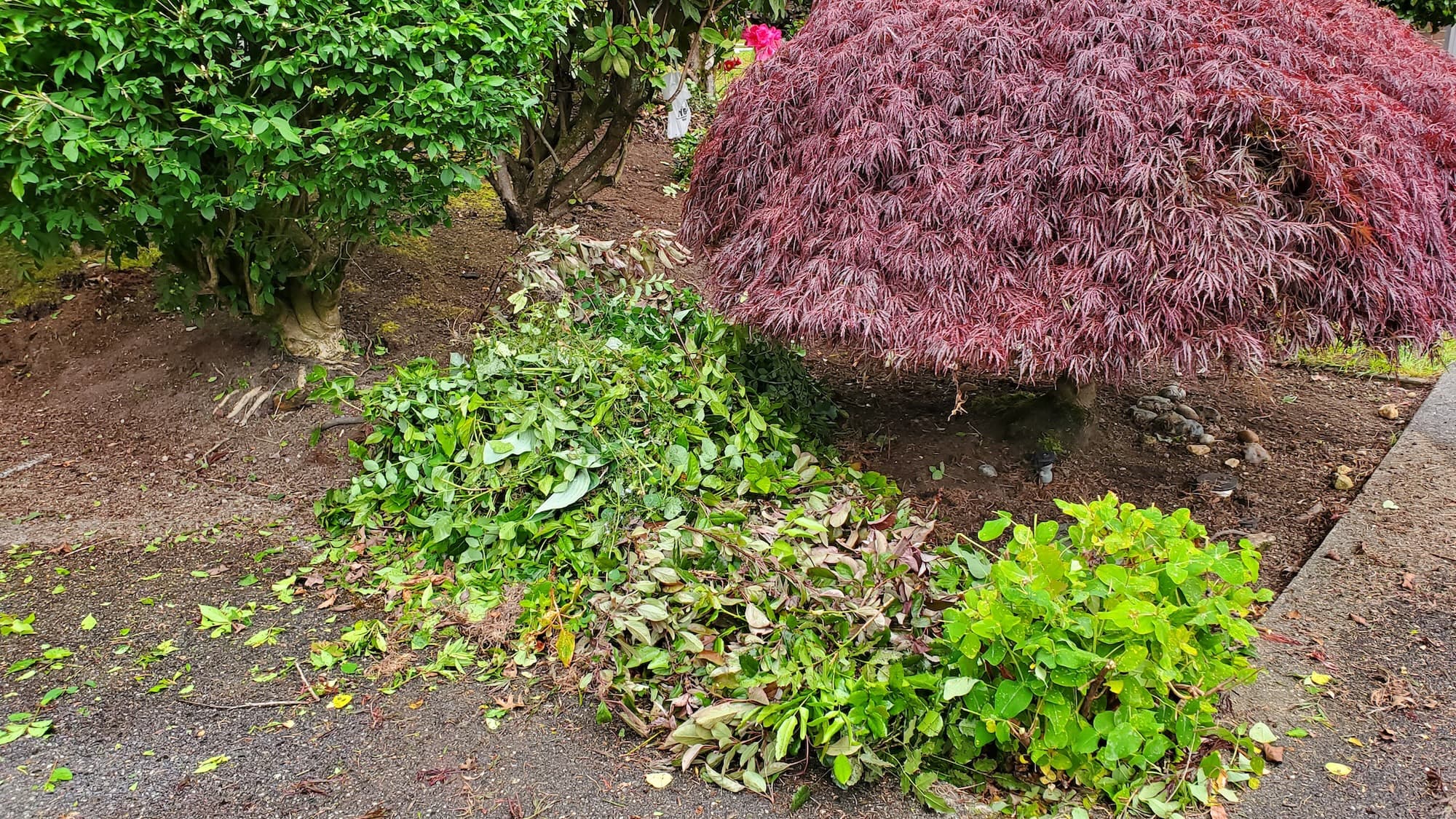West Seattle Lawn Repair
Homeowner’s Issue
West Seattle lawns face a predictable set of problems: thin grass under big maples, moss in shady yards near Alki and Lincoln Park, compacted clay pockets on hillside lots, and salt- or wind-exposed grass along Elliott Bay. Our glacial till soils often compact and stay cold and wet through fall to spring, which favors moss and annual weeds over turf. Summers can be dry and hot on west- and south-facing slopes, stressing shallow-rooted grass and forcing overwatering in an attempt to green things up.
Drainage is a common complaint—terraced yards and older lots on Admiral or Fauntleroy were built before modern drainage best practices, so water can sit and rot roots. Sun exposure varies block-to-block: bluff-top lawns get more sun but also more wind and salt spray; inland yards under big trees get persistent shade and moss. HOA and curb-appeal standards matter here; many neighbors want tidy, low-maintenance lawns without chemical treatments. We design repairs around Seattle’s rainy season and summer watering advisories, prioritizing compost topdressing, aeration, overseeding with region-appropriate blends, and manual or organic moss control to give West Seattle yards durable results that hold up on slopes and in shady pockets.
Our Quality Service
We repair lawns with tools and methods that work in West Seattle’s conditions: coring aerator, slit seeder, compost topdresser, and hand tools for moss and ivy removal. Typical timeline:
- Onsite assessment and soil test: 1–2 days to schedule.
- Service day (aeration + overseed + topdress): 1 day for most single-family front/back yards.
- Germination window: 10–21 days for seed to show; fuller cover in 6–12 weeks.
Local insight we apply: loosen compacted glacial till, add coarse sand on some slopes for drainage, choose seed mixes that tolerate shade and salt, and time work to avoid Seattle’s heavy fall rains. We use only sustainable, non-herbicidal methods—no chemical weed killers. Benefits include safer yards for kids and pets, improved curb appeal, lower maintenance, and longer-lasting turf established for our microclimates.
What’s Included
- Site assessment and basic soil test (pH & texture)
- Coring aeration or deep-spiking (based on compaction)
- Overseeding with region-appropriate seed mixes
- Topdressing with screened compost or compost-sand blend
- Hand-removal of moss, ivy, and big weeds
- Light raking and finish grading for seed-to-soil contact
- Cleanup and haul-away of debris (or green-bin drop-off)
Options / upgrades:
- Mulch + landscape fabric for beds bordering lawns
- Organic weed control (vinegar-based spot treatments and manual follow-up)
- Compost-only topdress vs. sand/compost mix for improved drainage
- Haul-away (dump fee included) or leave material for neighbor green bin
Before & After / Expectations
Expect some noise and visible disturbance on service day—cores, rillings, and compost spreaders leave a temporary messy look. Seed germinates in two to three weeks in good conditions; expect several follow-up mowings before a fully recovered look. Sloped yards may need repeated overseeding and a light topdress the following season to stabilize thin spots.
Care tips for West Seattle:
- Watering: early morning, short bursts; follow Seattle water advisories during dry summers.
- Weed pressure: hand-pull and remove in spring before seed set; expect a flush after rain.
- Moss & ivy: mechanical removal and improved drainage are long-term fixes; persistent ivy on slopes may need staged removal.
- Mowing: keep blades high (3–3.5”) to shade soil and reduce moss.
FAQs
Q: How long until I can use the lawn after overseeding?
A: Light foot traffic after 3 weeks; full use in 6–12 weeks depending on seed success and weather.Q: Do you use pesticides or herbicides?
A: No. We use organic and mechanical methods only—compost, manual removal, mulches, and organic fertilizers.Q: What if access is tight on a hillside lot?
A: We bring smaller equipment and handle more by hand. We’ll note access needs during the estimate.Q: When’s the best time to aerate in West Seattle?
A: Early fall is ideal; late spring is a second option if fall wasn’t possible.
Call to Action
West Seattle homeowners: book a free estimate and get a practical plan that lasts. We schedule quickly, work clean, and focus on sustainable results that suit Alki, Admiral, Lincoln Park and Fauntleroy yards. Email neatandtidyseattle@gmail.com to set a visit and get a clear price and timeline.










